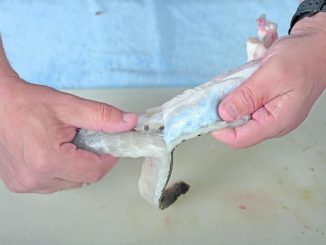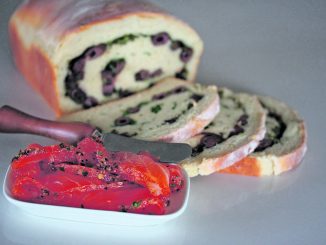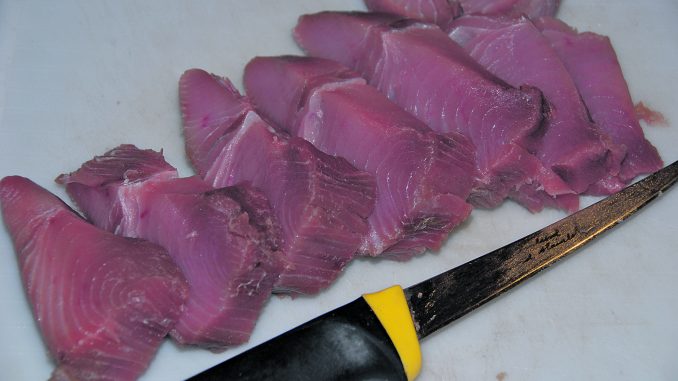
by Gordon Macdonald •
Smoking, one of the oldest ways of cooking, flavouring and preserving meats and fish, combines the effects of salting, drying, heating and smoking. While meats and fish can be cold smoked to preserve them, this process can take several weeks and requires generous salting and a substantial smokehouse to complete the task, especially with larger volumes of product. Hot smoking is easier, and is the most common method used. It can be completed with a minimum of equipment and ingredients, and it doesn’t take long.
WHY SMOKE
When you burn wood (pyrolysis) and break down its combustible carbon-based components, it releases hydrocarbons into the air: smoke. Smoke has antibacterial and antioxidant properties, which is why it helps to preserve meat and fish, but nowadays smokers are used mainly for flavour.
Another advantage of smoking is that it can lock in both flavour and moisture, thereby improving meats and fish, which can often be fairly dry when cooked with conventional methods. A prime example of this is tuna. When cooked all the way through with conventional methods, such as frying or baking, tuna becomes very dry and almost unpalatable. It is best eaten raw (sashimi style) or partially cooked and consumed immediately once it is taken from the heat – or smoked.
Whilst almost any fish can be smoked, some of the best ones include the more oily species, such as mackerel, mullet, tailor, tuna, bonito, trout, herring and salmon.
CHIP OFF THE BLOCK
During the smoking process, wood is burned slowly to create both heat and smoke. Any wood can be used for this but it’s imperative that you don’t use treated timber, or any wood that has come into contact with chemicals or pesticides of any sort. This could poison you.
While there are plenty of great smoking wood mixes available from places such as tackle stores, Bunnings and some BBQ and camping outlets, there are no issues with sourcing your own clean, dry product from non-poisonous timbers. Some of the more popular timbers for smoking include hickory, mesquite, gum, bloodwood, apple, cherry, alder, oak and beech. Sometimes old oak wine or port barrels are used for a different flavour.
These popular timbers are generally used as chips (small chunks), however finer shavings will give a much more intense smoke flavour as they will burn faster and more intensely, creating more smoke. Small blocks of wood are sometimes used when you want to smoke something for a longer time at a lower heat. Many people soak their wood chips in wine, port, masala or other liquids which permeate the wood and impart a greater depth of flavour to the smoked product.
How long you smoke your fish will depend on the heat generated by the burners, the size and amount of wood being used and also the density of the flesh being smoked. I like to use chips of wood rather than shavings, and I initially move the burners away from the base of the smoker (probably between 10-15cm) once the chips have started smoking up.
Be sure to check on the fish regularly to ensure you are not overcooking it, which will make it too dry. If it’s cooking too fast, move the heat further from the base of the smoker or decrease the flame size by adjusting the air vents on the burner, to slow down the cooking process.
There are so many variables to take into consideration during the smoking process, however a lower heat and longer smoking time will generally produce a better end product. Just check your burners and product regularly and regulate where necessary to avoid too much heat. Burners have a habit of flaring up after a while because the metho used in them burns more efficiently as it gets hotter or when it receives more oxygen, so keep an eye on them.
BRINING
Brining is done before you smoke the fish to remove excess blood and moisture. There are a lot of brine mixtures and recipes available and these generally include salt, water and brown sugar with the possible addition of soy sauce, wine, garlic, teriyaki sauce, port or other ingredients. Although I generally make my brine to taste without measuring the ingredients, I have included a basic recipe here for you to follow to get started. Don’t be afraid to experiment a little. Sometimes when smoking chicken I simply use a mix of soy sauce and brown sugar to immerse it in for an hour or so before smoking. This is also good for tailor or mackerel. For fish such as tuna however, I generally stick to a classic brine recipe because tuna flesh has a lot of moisture and blood to draw out before smoking.
LET’S GET SMOKING!
Step 1
You can smoke both freshly caught tuna as well as previously frozen fish, however you are best to wrap the chunks in absorbent paper towel overnight to draw some of the blood out. Also cut off any of the bloodline, as it tastes like dead buffalo butt when smoked.

Step 2
Cut your tuna chunks across the grain into slices of between 15mm to 25mm thick. I prefer thicker chunks because they’re likely to dry out. Ensure all slices are very similar thickness otherwise they will smoke unevenly.
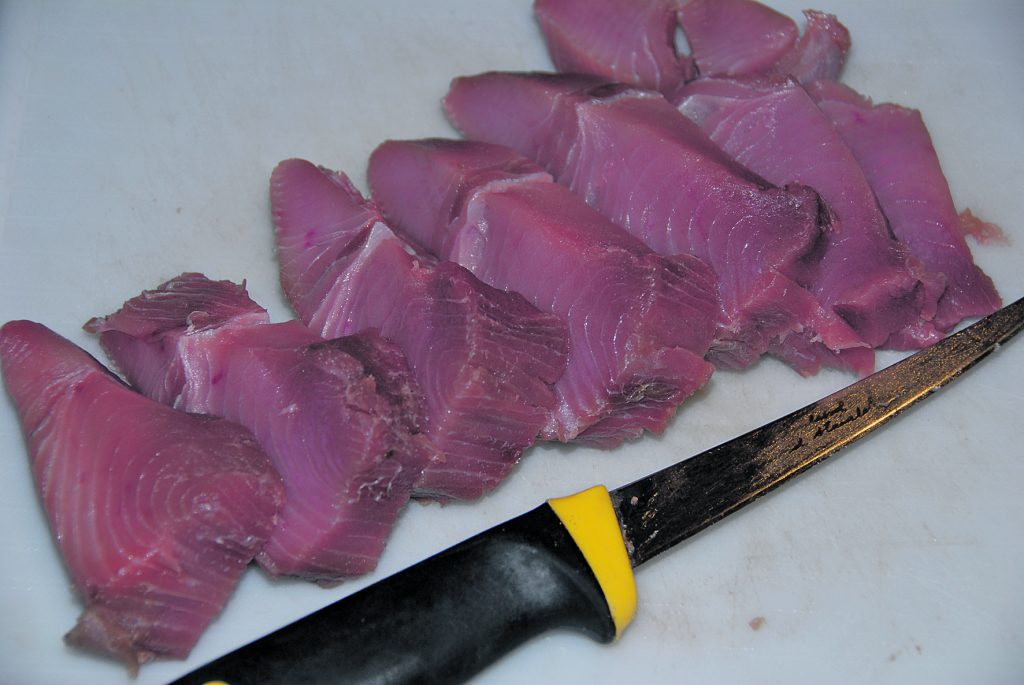
Step 3
To prepare the brine I generally use roughly 1/2 cup of cooking salt, 3/4 cup of brown sugar and eight cups of room temperature water for a large amount of fish (a couple of kilograms). However you can adjust the quantity of each depending on how much brine you’ll need for the amount of product you have to soak. Additionally, I add around four or so tablespoons of soy sauce to my brine, but this is not essential. Mix it all together, ensuring that all the salt is dissolved.
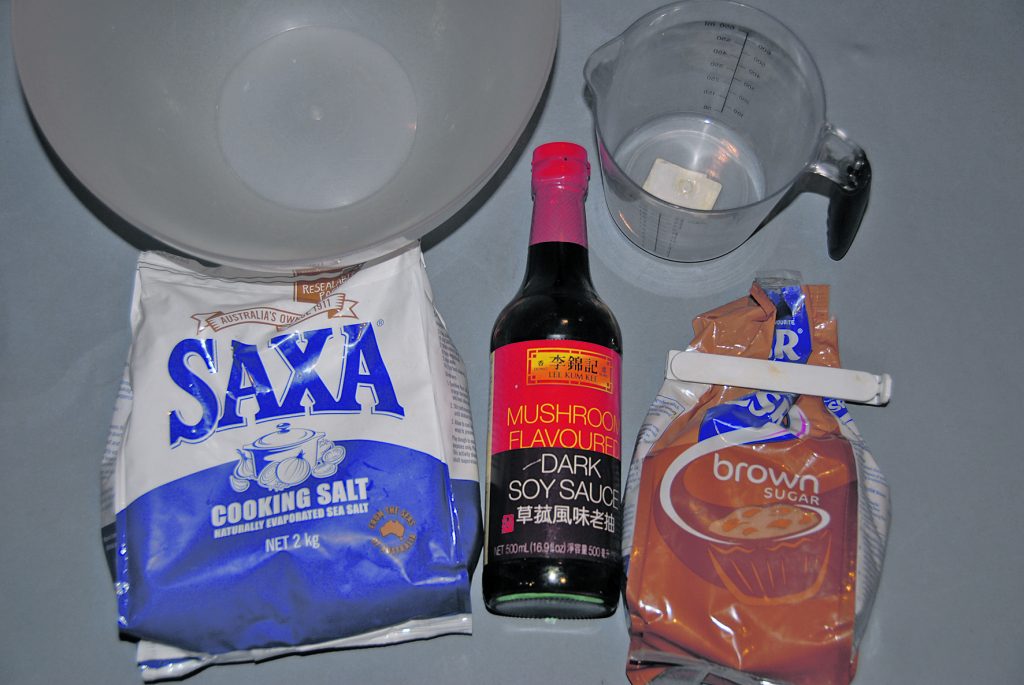
Step 4
Place all the tuna chunks into the brine and stir around a bit, then leave it to sit for at least 45 minutes.
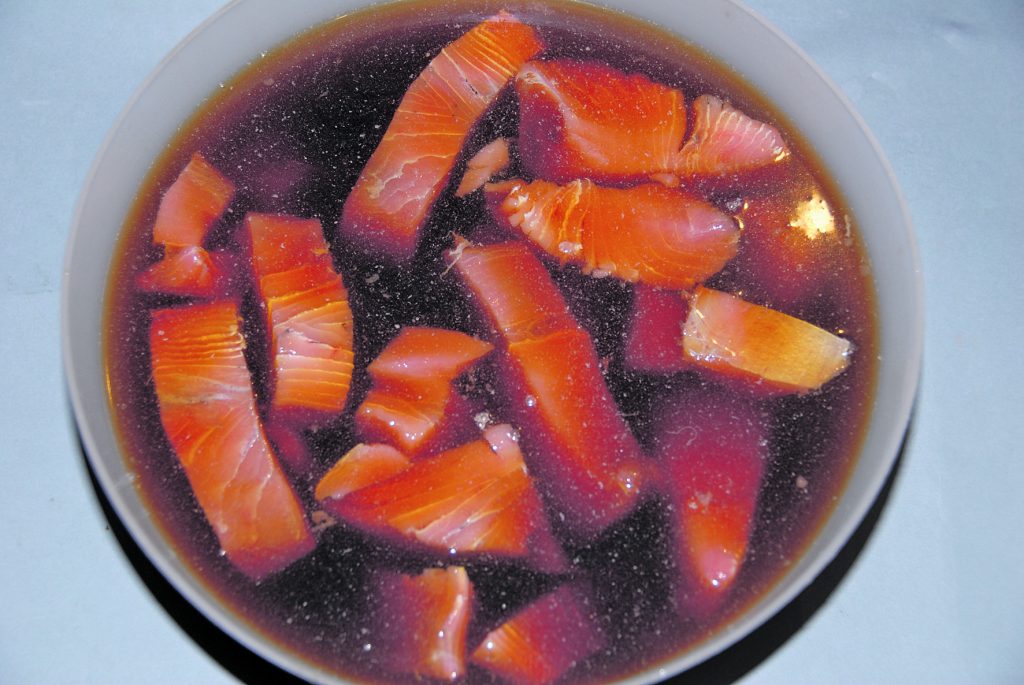
Step 5
While the tuna is brining, put some smoker chips into a bowl and cover with water or wine. This will ensure that they do not burn too quickly. You will need just enough chips to lightly cover the bottom of your smoker. These need to soak for 20-30 minutes.
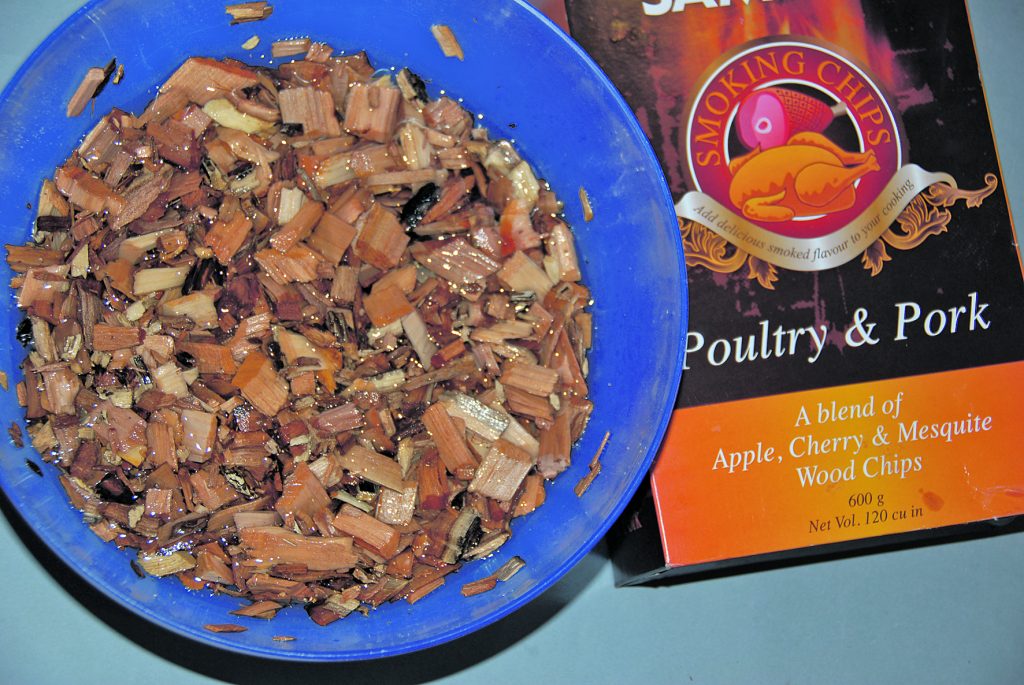
Step 6
Next get your smoker ready. Fill the burners with some methylated spirits. The burners will often have some gauze and cloth compound in the bottom. Fill the burners until the metho just covers these. I line the inside base of the smoker with alfoil to make clean up easier. Spray the rack or racks with a little olive or vegetable oil to avoid the fish sticking to it.
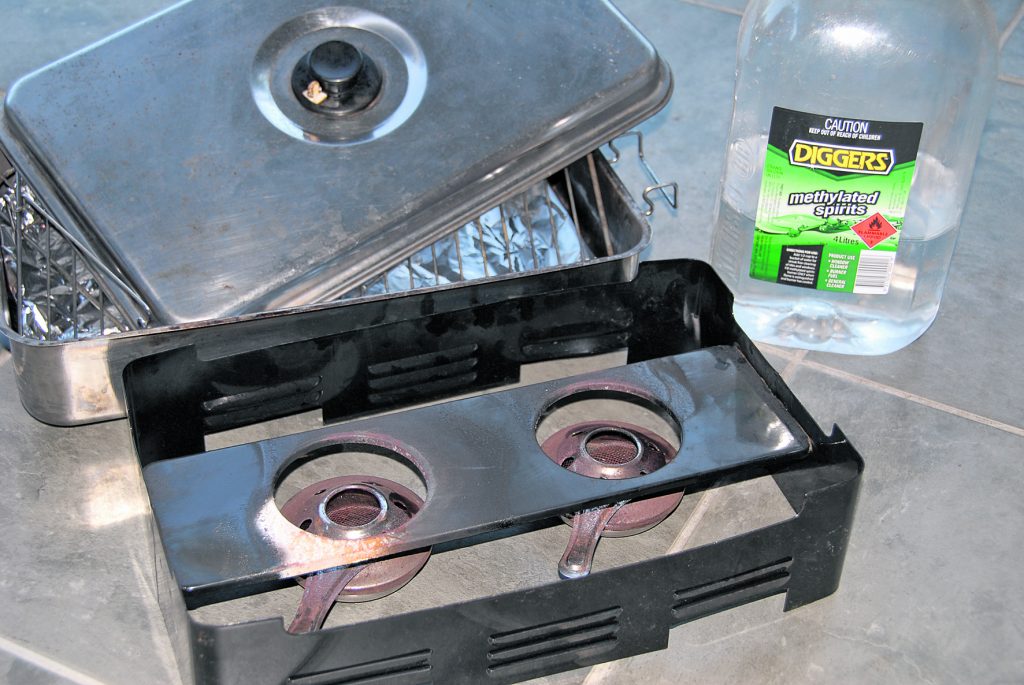
Step 7
After the prescribed time, take the wood chips out of the fluid and drain.
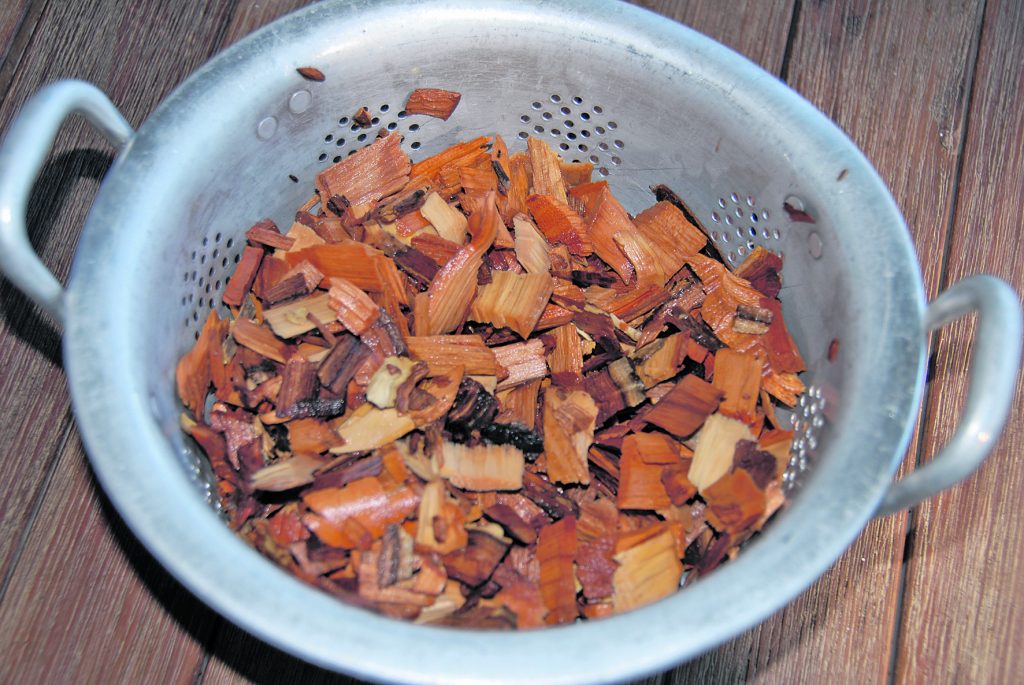
Step 8
Coat the bottom of the smoker with the wood chips, with a little more concentration over the area where the burners will sit underneath. Place your rack inside the smoker. I like to use a rack that sits up high in the smoker as this keeps the fish away from the heat, allowing it to smoke slower which seems to make it taste better.
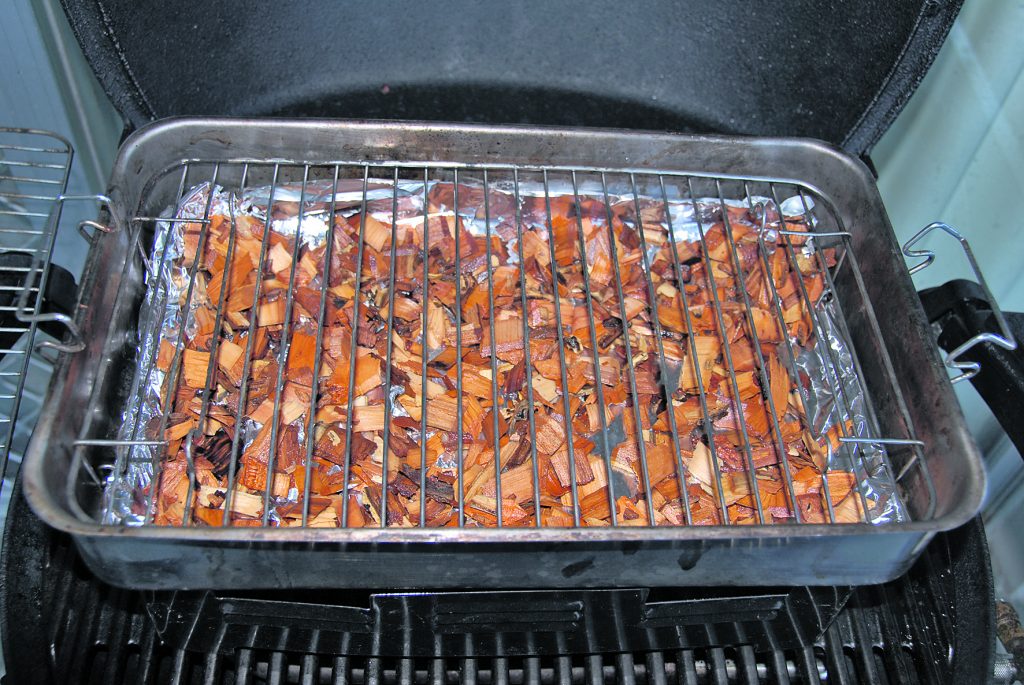
Step 9
Light your burners and place them under the smoker to start the smoker heating and the chips eventually burning, which will create the smoke we want. The burners will only produce a small flame initially until they heat up. Once an orange flame is produced, turn the dial to close the air vents on the burners and decrease the flame.
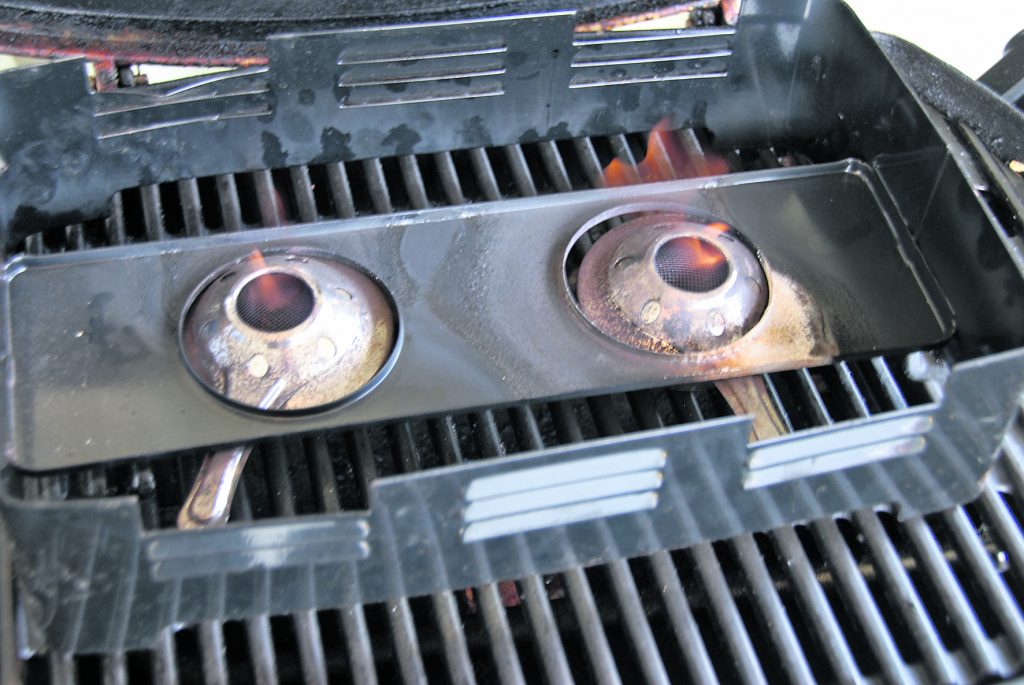
Step 10
Remove the tuna from the brine (after at least 45 minutes) and allow it to drain on a rack, or wipe it with some absorbent paper towel.
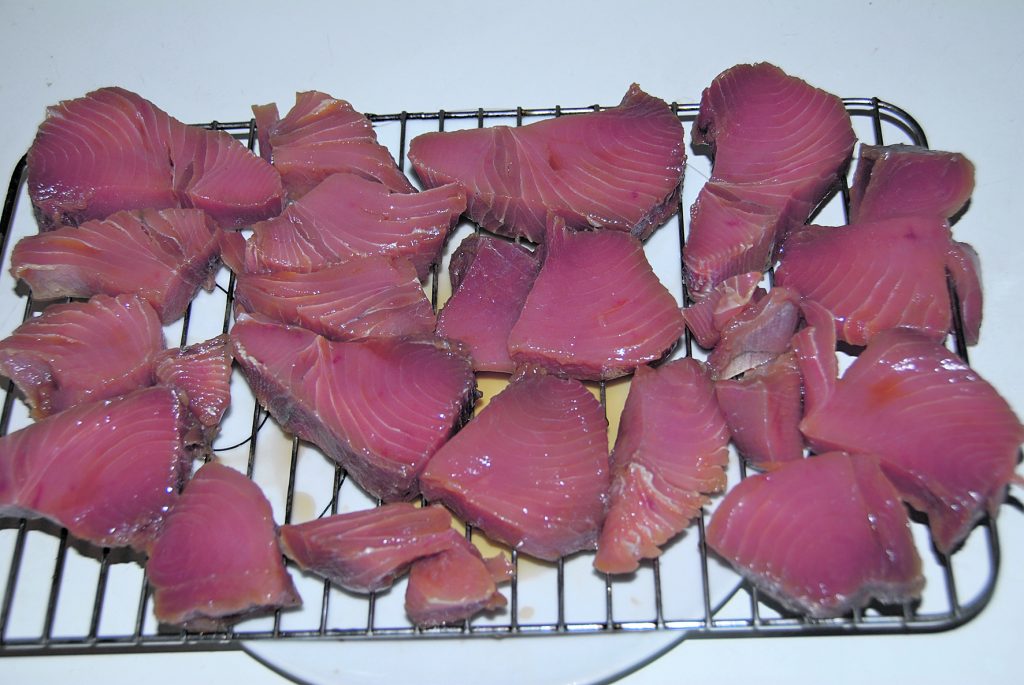
Step 11
Sometimes I coat some of the tuna with additional brown sugar. This gives a different (yet not sweet) taste to the tuna. You can coat it all or just a few chunks until you decide whether you like it.
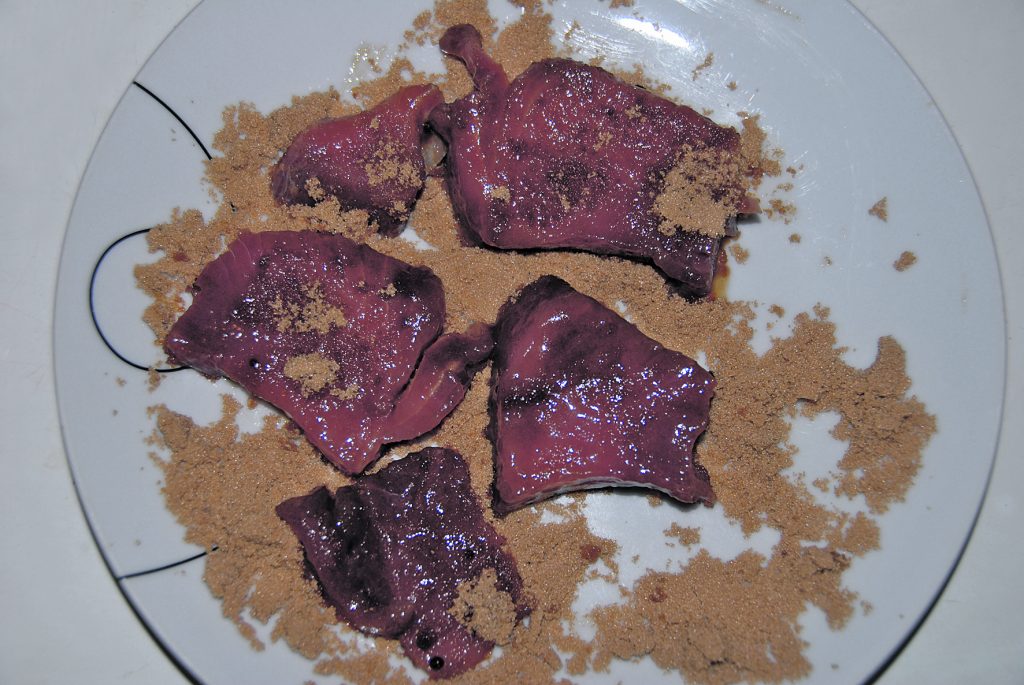
Step 12
Once you have the wood chips burning nicely and a good amount of smoke inside the smoker, place all the tuna chunks on the wire rack. Avoid having them touching so the smoke can encompass them evenly. Ensure you do not have too much heat present. It’s best if the tuna cooks and smokes slowly. Move the burners further from the base of the smoker or stunt the flame by starving it of oxygen to decrease the heat if necessary.
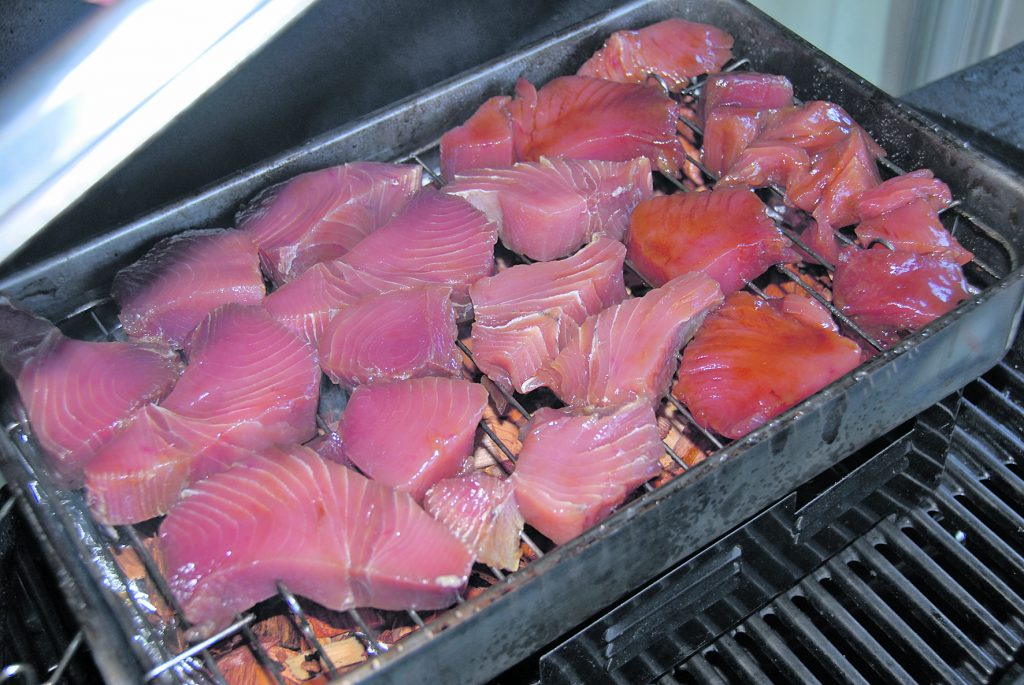
Step 13
As it smokes and cooks, the tuna will change colour to a brownish-grey. I like to check the tuna regularly to ensure it is not overcooking, and often turn it over when I think it is around half done.

Step 14
If you think it may be ready, you can break a piece to see how well it is cooked. When the tuna chunks are cooked most of the way through, with just a small tinge of pink remaining in the middle, remove it from the heat. You can quickly remove it by lifting the entire rack from the smoker, which avoids it cooking further.
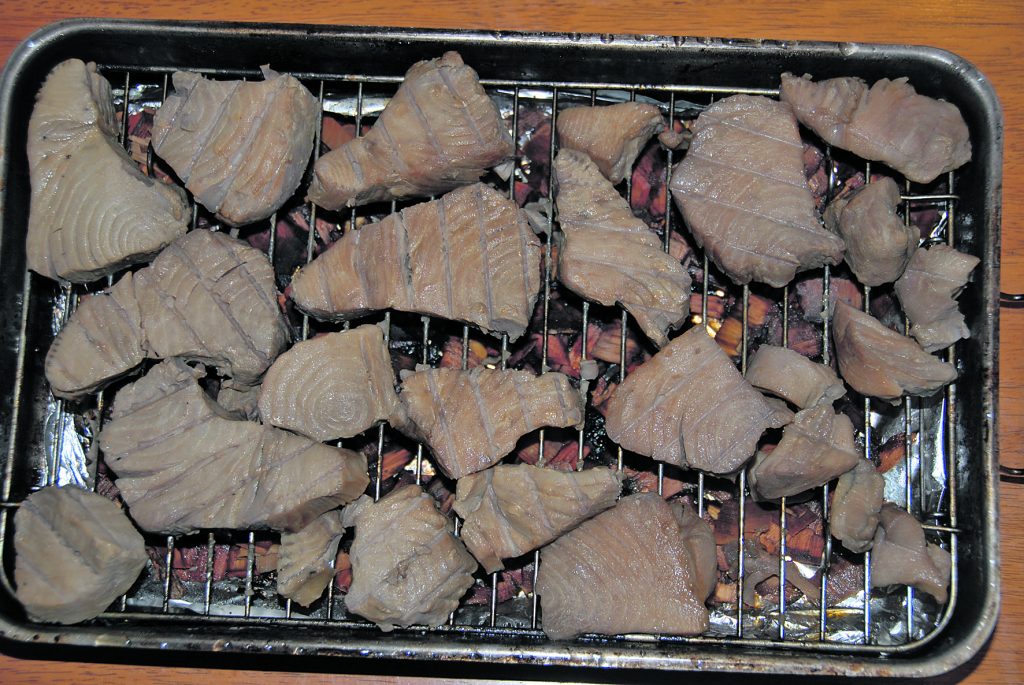
You can eat your tuna immediately while still hot, or allow it to cool and eat it later. It’s a great addition to pasta, salads and sandwiches, and divine when served with cottage cheese or cream cheese on crackers whilst having a few coldies. I sometimes cryovac a portion and freeze it for future needs when doing a large batch. However it’s consumed, I think smoking tuna and other fish is a great way to enjoy some of the ocean’s prime bounty.

